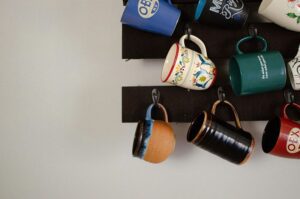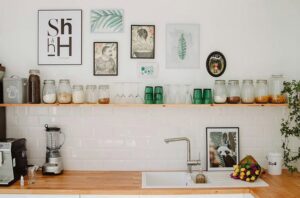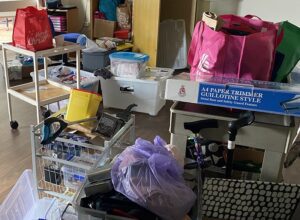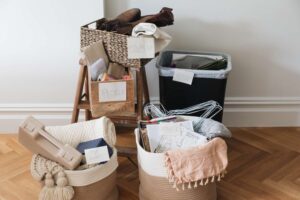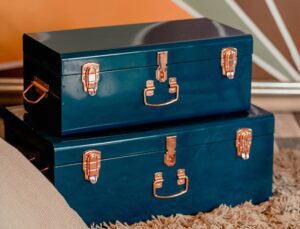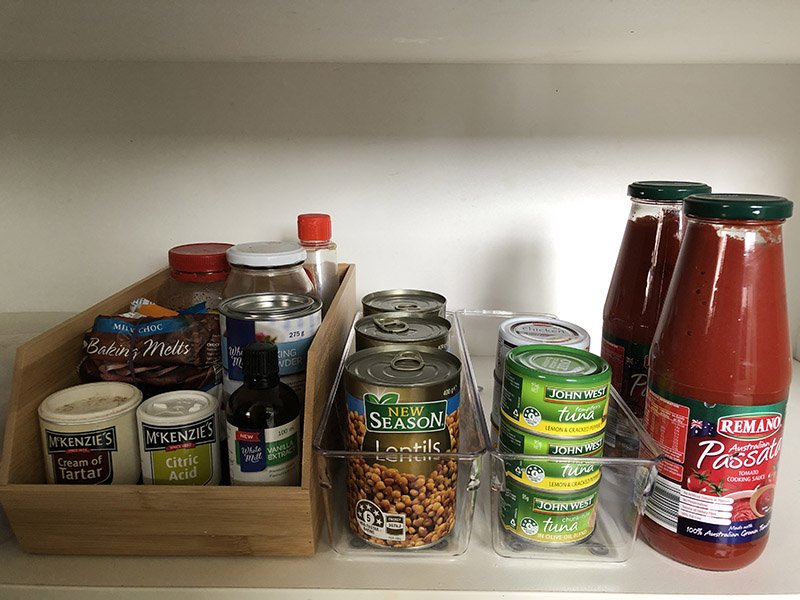
If you have watched The Home Edit or wandered through Ikea you will know the appeal of containers. Even Marie Kondo has succumbed to the trend and now has her own collab with The Container Store.
But do containers actually help us get organised?
Should I put my clutter into containers?
Yes and no.
Containers, tubs, bins and buckets help us categorise and maintain category boundaries. There is a great organising technique Dana White calls the Container Concept. It involves assigning a container to a particular category, and making it a limit. Adhering to it can help prevent clutter accumulation. For example you could assign all handbags to a tub under your bed, or to a single drawer. Space is a finite resource so once it’s full, it’s full. Then the situation should be one-in-one-out. It’s a simple rule anyone can follow, and even the kids can learn it, so I’m all for it.
Containers act as untethered drawers we can pull out to allow easy access to the nether regions of a deep pantry.
They give us something to tug on and pull down from the top of the wardrobe without having to get a ladder and a torch to see what’s right at the back up there.
They are essential. After all, every room is a container and every cupboard is a container.
They are great in pantries for dry goods and keeping bugs out of bulk items.
They are nice for storing upright Tupperware lids and keeping them in order like.
They show us instantly how much of one category we have, so we can do a quick inventory check before heading to the supermarket.
They give us something to label so that we can find things fast.
They seem to be something organised people have.
They are stackable.
They look nice.
So then “Should I put my clutter into containers?”
Containers on their own don’t solve a clutter problem.
Too much stuff is still…too much stuff. Thinking that containers will solve a clutter problem is like thinking that organising our stuff will give us more space. It only works for a few weeks. Soon enough we lose track of our abundant items. We stop folding everything in a certain way to make it fit into the crowded drawer. We tire of moving six containers to access the one we want. We end up with things all over the bench and mayhem reigns again.
And just as they can be handy for keeping items together, containers often hold collections that have no theme. No theme means no use. Leave a container on a bench and watch it fill up with miscellaneous items. Safety pins, mail, pens, banking cards, unidentified keys, pet rocks, Happy Meal toys. Take it from me, this motley bundle of items can take more time to dismantle than anything.
Also, landfill. More plastic = bad for the environment. Those big tubs with the lids are tempting to stack but the lids break readily. The wicker baskets you put your accessories in aren’t as appealing when they get dusty. Then it’s just more clutter to deal with.
Containers can be clutter enablers and a bandaid solution. I often find them in cluttered homes as a last cry for help, a futile effort to gain control. Sometimes even alongside untouched books about organising. Hands up if you bought Marie Kondo’s book and haven’t read it yet.
“Should I put my clutter into containers?” If not, what is the solution?
Declutter first. My clients often ask if they should buy containers before we start. I always say no. It’s impossible to know how many and what size until we declutter and take stock of what remains. Hopefully we don’t need as many as you thought. And often we find a lot of empty vessels in the wake of the decluttering session. Tupperware that has been emptied. Shoeboxes that were put away just in case. Old iPhone cases. Nice gift boxes that were too good to throw away.
“Should I put my clutter into containers?” you ask. Yes maybe, but with caution. Because it’s not about the containers.
Get in touch for a more bespoke solution.

